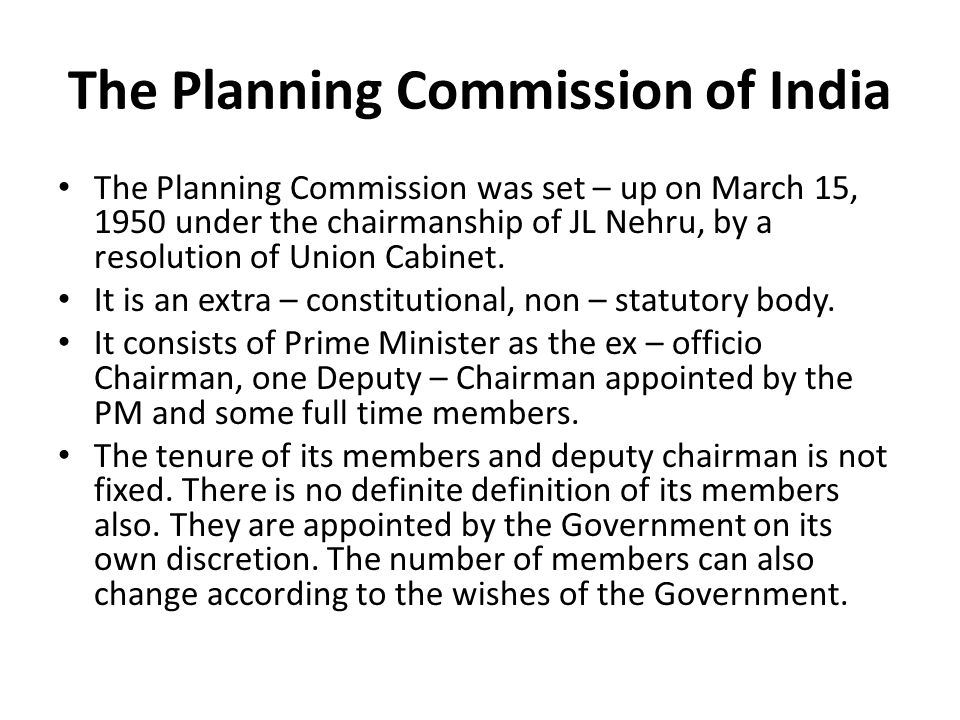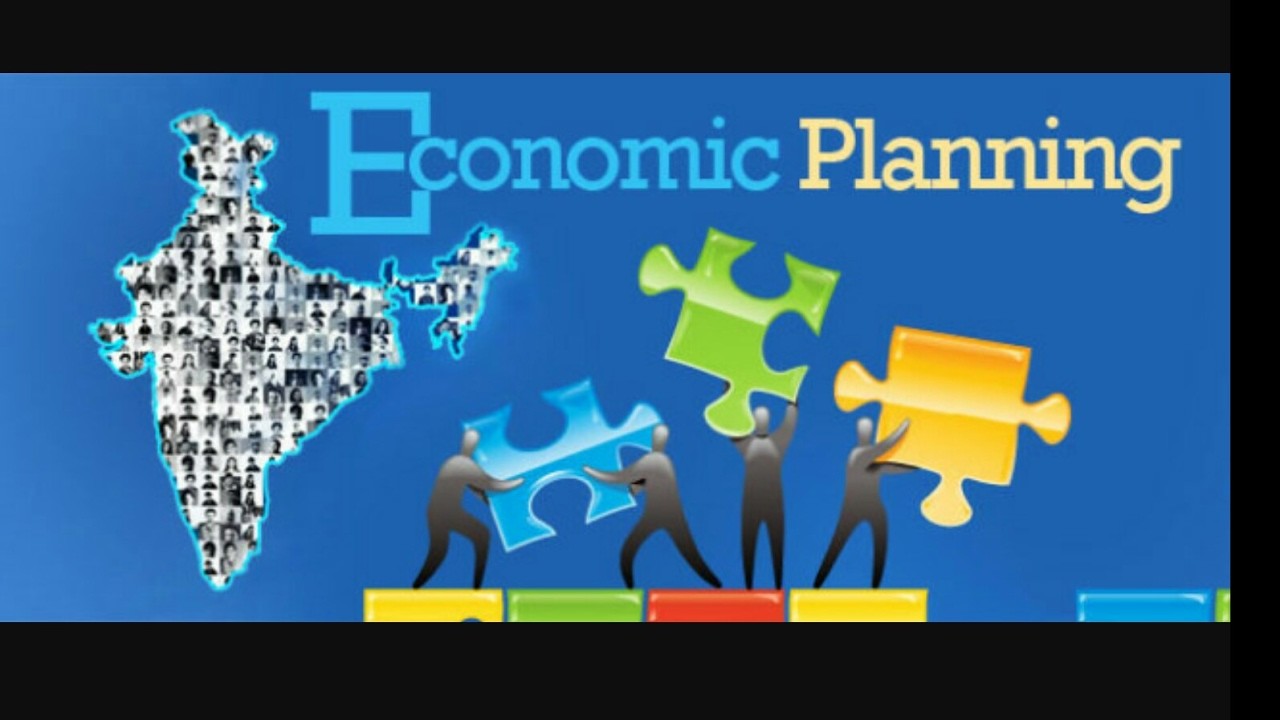The Planning Commission of India was a government body responsible for the formulation and implementation of the Five-Year Plans, which were a series of economic development plans in India. It was established in 1950 by the government of Jawaharlal Nehru, the first Prime Minister of India, and played a key role in shaping the economic policy of the country for several decades.
The main objectives of the Planning Commission were to promote balanced and rapid economic development, reduce economic and social disparities, and ensure the maximum utilization of resources. It also aimed to increase productivity, raise living standards, and promote social justice.
The Planning Commission was headed by a Prime Minister, who was assisted by a Deputy Chairman and other members. It had a number of committees and sub-committees that were responsible for different sectors of the economy, such as industry, agriculture, infrastructure, and social services. The Planning Commission also had a number of advisors and consultants who provided expert advice on various economic and development issues.
The Planning Commission played a crucial role in the development of the Five-Year Plans. These plans were based on the principle of self-reliance, which emphasized the need for the country to develop its own resources and industries, rather than relying on foreign aid or investments. The Five-Year Plans were formulated after extensive consultation with various stakeholders, including state governments, industry bodies, and experts. The plans were then implemented through a variety of measures, such as investment in infrastructure, promotion of small and medium enterprises, and the expansion of public sector enterprises.
The Planning Commission also played a key role in the implementation of economic reforms in India. In the 1990s, the government introduced a series of economic reforms that aimed to liberalize the economy and make it more open to global trade and investment. These reforms included the deregulation of industries, the privatization of state-owned enterprises, and the reduction of tariffs and other trade barriers. The Planning Commission played a key role in the implementation of these reforms, providing guidance and support to the government in their implementation.
The Planning Commission of India was dissolved in 2014, and its functions were transferred to the newly created National Institution for Transforming India (NITI Aayog). Despite this, the Planning Commission remains an important part of India's economic history, and its contributions to the development of the country continue to be recognized and appreciated.









